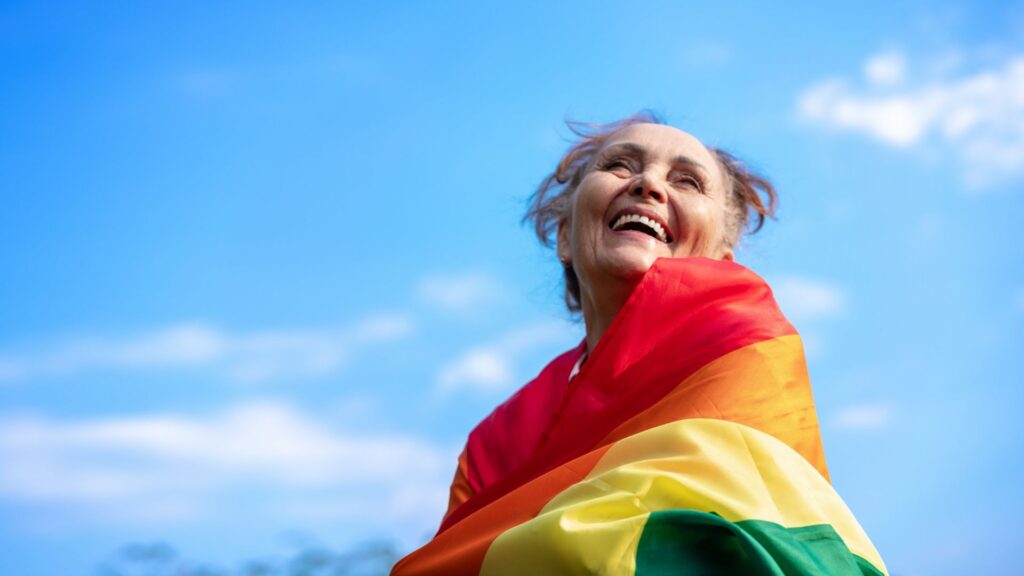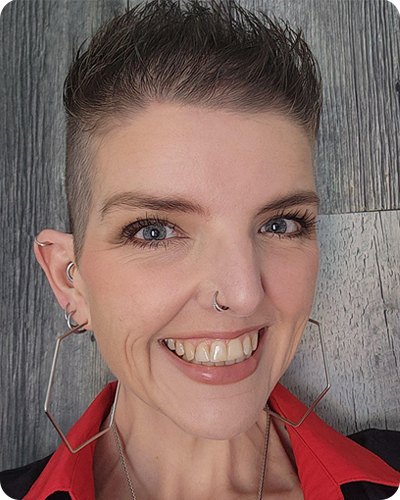Estimated reading time: 3 minutes
It took me a long time to tell my Catholic parents that I am a lesbian. I remember coming home from university one Christmas with my heart in my throat. This was going to be the time. I wanted to do it over the phone so that I wouldn’t have to see their faces, so that I could hang up and cry into my pillow, but I couldn’t do that to them. So, I first sat down with my mother by the fire, over a cup of eggnog, and just…said it. “Mom, I’m a lesbian.”
It took me years to utter that simple phrase, but it would take far longer before I felt ready to “come out” about my mental illness.
Pride is a funny thing. This month, we celebrate 2SLGBTQIA+ pride, and it is a celebration of all that our community has fought so hard for and achieved, and a commemoration of how far we still need to go.
We hesitate to mention mental health and 2SLGBTQIA+ in the same breath and for very good reason – it was only in 1973 that homosexuality was finally removed as a “mental disorder” in the DSM (the “Bible” of psychiatry), but it continued to make an appearance for those “distressed by their homosexuality” until the most recent edition in 2013. Gender dysphoria continues to be a diagnosis that is even required before gender-affirming treatment is begun. The stigma around mental illness intermingles with the stigma around the 2SLGBTQIA+ community and continues to complicate the picture.
And yet we know that members of the 2SLGBTQIA+ community, particularly youth, are more susceptible to mental illness and suicide. There are a variety of complex reasons for this, but many of them come down to the breakdown of family and social supports, and the social stigma that comes with the territory of being anything but straight and/or cis-gender. Bisexual, genderqueer, and trans individuals face particular stigma even from within the 2SLGBTQIA+ community. Homelessness is a problem specifically for 2SLGBTQIA+ youth. And intersectionality plays a huge role in the marginalization of 2SLGBTQIA+ persons since white, cis-gender gays and lesbians are less likely to struggle with their mental health than the rest of their rainbow family.
The fear of mixing talk of mental illness with talk of the 2SLGBTQIA+ community is damaging for those who are struggling and are in need of support that caters to their specific needs. Sexual orientation and gender identity are integral parts of a human being that have a lot to do with that person’s mental health and are bound to play a role in any existing mental illness. Any treatment that ignores these parts of me would never have given me a good result. In my episodes of depression, my delusional guilt about my homosexuality needed to be addressed. In my mania, hypersexuality and risk-taking needed to be addressed in the context of my sexual orientation. To do otherwise simply would not have worked. I do not have a mental illness because I am a lesbian, but I am a lesbian who has a mental illness. To forget that is to do a disservice to me – and ultimately to the whole 2SLGBTQIA+ community. This is one of those areas in which we still have a ways to go.
I was lucky. My mother simply laughed. “Oh finally!” she said, “We wondered when you would tell us!” You see, it seemed that my parents had suspected for years. Relief flooded through me when she finished: “Your father and I don’t care who you love, as long as they make you happy.” (I did, however, wish they had told me this years before…it would have made the coming out so much easier!) Thanks, Mom and Dad.






